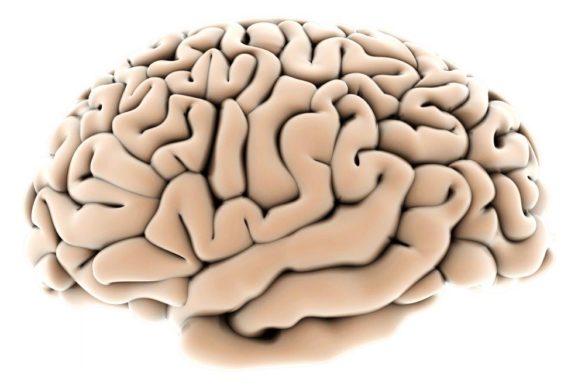by Mariana Leitão Marques, R. Taipa, M. Melo Pires, J. N. Carvalho, A. Morgadinho
We report a female patient, 82 years old, who in February 2010 started developing asthenia, fatigue and breathlessness on minimal exertion. Until that time she was completely autonomous (agricultural labourer). She reported progressive sphincter changes (urinary retention and incontinence). The patient denied respiratory and gastrointestinal complaints (including dysphagia or anorexia) and also joint symptoms or myalgias.
There was a history of a flu-like syndrome about 2-3 months before the start of complaints.
Since then, she developed progressive proximal muscle weakness (first in the pelvic girdle and then also reaching the scapular girdle) until the patient became unable to walk. One month after the onset of symptoms there was also a progressive loss of fine motor skills. At that time she was hospitalised and treated and studied at the Neurology Department.
The Neurological exam revealed:
– Head and eyes in the midline
– Isochoric and reactive pupils; no visual field deficits
– Preserved ocular movements; discrete nystagmus in dextroversion
– No facial paresis
– Neither dysphagia nor dysarthria
– Tetraparesis (mainly proximal)
Muscle Strength (Right / Left):
Upper limbs
– Shoulder abduction/adduction: 2/2;
– Elbow flexion and extension: 3/3;
– Wrist Extension: 3/3; Wrist flexion: 4/4;
– Fingers abduction and adduction: 3/3;
Lower limbs
– Thigh flexion and extension 4-/4-;
– Leg flexion and extension 4-/4 -;
– Foot flexion 4+/4; Foot extension 4-/4-
Generalised hyporeflexia, mainly in the lower limbs; plantar responses in flexion; pain on palpation of thigh muscle masses. There was no sensory loss (touch, pain). Vibration sense could only be correctly tested in upper limbs and was normal.
All other aspects were normal
Skin was normally hydrated, without rashes or petechiae.
Heart and lungs sounds were normal.
Blood Pressure: 120/80 mmHg. Heart rate 72bpm, rhythmic. Tympanic temp. 36ºC.
The following exams were performed:
Cervical MRI – degenerative changes, without compromise of the spinal cord.
Electromyography – examination performed revealed the presence of findings related to an acquired myopathy (strongly suggestive of a polymyositis).
Blood Analysis:
– Hemogram: 15,200 leukocytes, with no other significant changes.
– CPK> 11,000, AST 405, ALT 466, GGT 188, CRP 2.
– ESR 65mm / 1st h;
– Serum Electrophoresis – slight increase of alpha1, alpha 2 and beta globulins; hypoalbuminemia
– Thyroid hormones normal
– Immunoglobulins normal
– Auto antibodies: ANA strongly positive, ENA negative
– Antiphospholipidic syndrome – negative.
– Anti-SSA negative, Ds-DNA negative, Anti-PL1 negative, Anti-KU negative,
Anti M2 positive
– Serologies: HIV1/2, Syphilis reaction negative (VDRL), HCV, HBV negative.
Immune to HSV, toxoplasmosis, rubeolla, CMV; Brucella negative.
Urine Analysis:
– Combur test – bacteriuria;
– Urine electrophoresis- tubular proteinuria.
In this context, the patient presented a “myopathic syndrome”, so she was investigated for evidence of an occult neoplasia, as there could be the presence of a paraneoplastic polymyositis.
Tumour markers: CA15.3, NSE, SCC and β2-microglobulin slightly increased.
Mammography: revealed some bilateral, well defined calcifications without malignant criteria. It was suggested to do a mammography and ultrasound control within 6 months.
Thoraco-abdominal-pelvic CT scan: No masses or adenopathies were observed in this exam. It was considered normal according to age and gender.
Because at this point we could say that we had to deal with an immune-mediated myopathy, it was decided the patient should be treated with methylprednisolone bolus (1g for 5 days) and then prednisolone (60mg/day). The urinary infection was treated with ciprofloxacin 500mg for 8 days.
We also performed muscle biopsy. The report was not complete at the time of discharge.
She was discharged after 14 days. At that time the patient had clinically improved (ESR and CPK decreasing significantly).
In June 2010 (one and a half months later), she started complaining of dysphagia for solids, which evolved into dysphagia for liquids, and was again hospitalised. Also a worsening of muscle weakness was observed. The patient reported having stopped the daily treatment with prednisolone about 2 weeks before for (apparently) not having understood the correct duration of treatment.
She was again admitted and immediately restarted a therapy with steroids, with considerable improvement of dysphagia but still having trouble in walking.
The anatomopathological study (Muscle Biopsy) revealed: Perifascicular infiltrate, compatible with the diagnosis of a dermatomyositis.
We discussed the clinical case with the Medicine Department and the patient is now attending the “Auto-immune diseases Consultation” at our hospital.
She is now treated as follows:
– Prednisolone 40mg id (progressive weaning)
– Azathioprine 50mg 2 id
– Omeprazole 40mg id
– Acetylsalicylic acid 100mg id
– Furosemide 40mg id
– Sertraline 50mg id
– Alprazolam 0.5mg id
– Trazodone 150mg 1/3 id
– Paracetamol SOS
Blood analysis showed CPK and ESR being normal; AST 187, ALT 166 (decreasing).
She no longer had dysphagia and is able to walk with unilateral support.
Comment by the authors:
Dermatomyositis (DM) is one of the idiopathic inflammatory myopathies. The differential diagnosis is often difficult between other inflammatory muscle diseases as polymyiositis, (PM), necrotising autoimmune myositis (NAM) and sporadic inclusion body myositis (sIBM).
These diseases have in common the presence of moderate to severe muscle weakness and inflammation on muscle biopsy, but they represent a heterogeneous group of acute, sub-acute and chronic muscle diseases.
In 1975 Bohan and Peter have purposed a set of criteria to aid the diagnostic and classification of DM and PM. Of the 5 criteria, 4 were related to the muscle disease:
(1) progressive proximal symmetrical weakness
(2) elevated muscles enzymes
(3) an abnormal electromyogram
(4) an abnormal muscle biopsy, while the fifth was the presence of a compatible cutaneous disease
At that time it was thought that DM and PM were distinguished by the presence of a rash in DM. Nowadays it is known that DM and PM have distinct immunopathological mechanisms.
Skin involvement is seen in the majority of cases of DM, but not in all. The correct percentage of cases of DM without cutaneous involvement is not known because most of them are thought to be PM cases. The diagnosis is relatively easy when the typical skin changes are present (red or blue-purple discoloration rash), and can be established by elevated levels of serum muscle enzymes, EMG findings and definitively by muscle biopsy. But DM can also be diagnosed in the absence of cutaneous manifestations, based exclusively on clinical and pathological criteria. This is the most sensitive diagnostic tool, because it shows distinct features for each myopathy. In DM, the pathology shows a perivascular inflammation, or an inflammation at the periphery of the fascicle and it is often associated with perifascicular atrophy. This should raise the suspicion of DM even in the absence of inflammation.
In the clinical case we have presented, the patient did not experience a cutaneous involvement, which precluded a more straightforward diagnosis.
From whatever kind of myopathiy she suffered, it was mandatory to exclude a paraneoplastic process, which we did. DM is much more often associated with malignancy than PM or sIBM, particularly in a patient aged over 50.
Even though we did not find any sign of neoplasies, she should maintain a tight vigilance for at least the next three years, since myopathy as a paraneoplastic manifestation can appear before any other sign of disease.
Images:
References:
– Dalakas MC. Review: An update on inflammatory and autoimmune myopathies. Neuropathology and applied Neurobiology (2011), 37, 226-242
– Dalakas MC, Karpati G. Polymyositis, dermatomyositis and inclusion body myositis. Harrison’s Principles of Internal Medicine 17th edn. Eds Fauci. E Braunwald, DL Kasper, SL Hauser, DL Lomgo, JL jameson, J Loscalzo. New York, NY: McGrraw Hill (2008); 2696-703
– Callen Jeffey P., Wortmann Robert L. Dermatomyositis. Clinics in Dermatology (2006) 24, 363-373
– Hilton-Jones D. Infammatory muscle diseases. Current Opinion in Neurology (2001), 14:591-596
– Koth ET et al. Adult onset polymyositis/dermatomyositis: clinical and laboratory features and treatment response in 75 patients. Annals of the Rheumatic Diseases (1993); 52: 857-861
– Lankhanpal S, Bunch TW, Ilstrup DM, et al. Polymyositis-Dermatomyositis and malignant lesions: does an association exist? Mayo Clinic Proc (1986): 61: 645-53
– Bohan A, Peter JB. Polymyositis and Dermatomyositis. New England Journal of Medicine (1975); 292: 344-7 and 403-7
M. Leitão Marques, J. N. Carvalho and A. Morgadinho work at the General Hospital, Coimbra University and Hospitalar Center, Department of Neurology, Portugal
R. Taipa and M. Melo Pires work at the Santo António Hospital, Oporto Hospitalar Center, Department of Pathology, Portugal











2 comments
Thanks for this clear and interesting report. Authors had chosen the title: tetraparesis as a presentation form of dermatomyositis. Because of the aim of this article is to talk about the importance of muscle histopathological findings that suggest the diagnosis of DM and not PM, even there is no skin changes with the myopathic symptoms, I suggest that the title would be dermatomyositis sine dermatitis: who can muscle biopsy help the diagnosis.
Dear Julian,
I thank a lot your comment. You’ve made a smart summary of what was the presentation purpose of this clinical case and as such, I agree that the title could be more interesting and more focused on the absence of rash.
Nevertheless,it was a case studied and presented by neurologists, so, at that time, the tetraparesia took the lead role in the subsequent investigation.
I liked a lot your suggestion.
Best regards,
Mariana